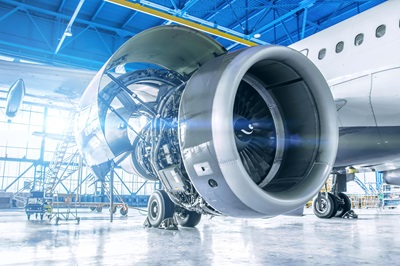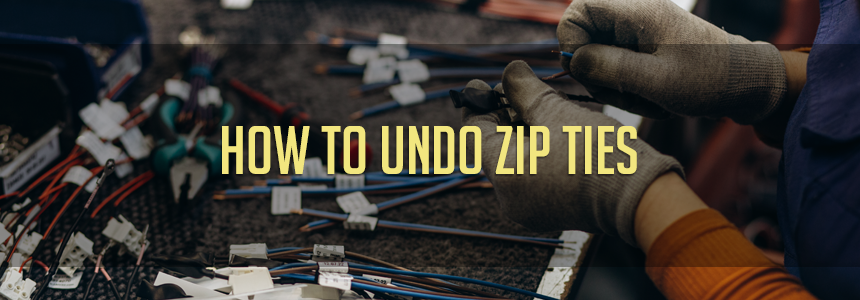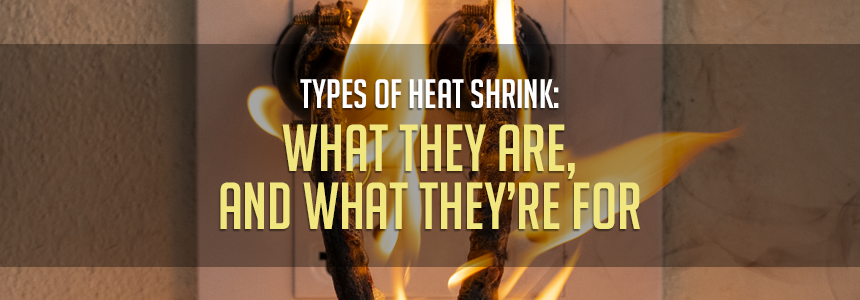Protecting Aircraft Wing Wiring: The Critical Role of Double-Wall Heat Shrink and Butt Splices

Aircraft wings are marvels of engineering, designed to withstand extreme conditions while housing complex electrical systems. Ensuring the integrity of these systems is crucial for flight safety and performance. This article explores the use of double-wall heat shrink tubing and butt splices to protect wire connections in aircraft wings, focusing on their ability to withstand high-altitude pressure and temperature variations.
Understanding Aircraft Wing Structure and Wiring Challenges
Aircraft wings are not just aerodynamic surfaces; they are intricate structures that house fuel tanks, control surfaces, and a network of electrical wiring. The wiring in aircraft wings serves various critical functions, including:
- Powering navigation lights
- Controlling flaps and ailerons
- Providing data for sensors and instruments
- Operating de-icing systems
These electrical systems must operate flawlessly in an environment that presents unique challenges:
- Extreme temperature fluctuations: Wings can experience temperatures as low as -60°C at cruising altitudes and much higher temperatures on the ground in tropical climates.
- Pressure changes: As an aircraft climbs or descends, the pressure inside the wing changes dramatically, potentially affecting wire connections.
- Vibration and mechanical stress: The constant flexing and vibration of wings during flight can strain electrical connections.
- Exposure to moisture and chemicals: Despite being sealed, wings can be exposed to condensation, fuel vapors, and de-icing fluids.
Given these challenges, protecting wire splices is crucial for maintaining the reliability and safety of aircraft electrical systems.
The Importance of Proper Wire Splicing in Aircraft
Wire splices in aircraft wings must meet stringent standards to ensure safety and reliability. Improper splicing can lead to:
- Electrical shorts or open circuits
- Increased resistance, leading to voltage drops or overheating
- Corrosion at connection points
- Mechanical failure due to vibration or stress
- Failure due to heat exposure
To address these concerns, aerospace engineers and technicians rely on specialized splicing techniques and materials, with butt splices and double-wall heat shrink tubing being primary components of a reliable splicing solution.
Butt Splices: The Foundation of Secure Connections
Butt splices serve as the mechanical and electrical bridge between two wire ends. In aerospace applications, high-quality butt splices offer several advantages:
- Consistent electrical connection: Properly crimped butt splices provide a low-resistance path for current flow.
- Mechanical strength: They withstand the vibration and movement inherent in aircraft operations.
- Compact profile: Their small size is ideal for tight spaces within wing structures.
- Compatibility with various wire gauges: Aircraft use different wire sizes for different applications, and butt splices are available to match these requirements.
When selecting butt splices for aircraft use, it's crucial to choose those that meet aerospace standards, such as the MIL-S-81824/1 qualification. These splices are typically made from high-quality materials like tin-plated or nickel-plated copper, ensuring excellent conductivity and corrosion resistance.
Double-Wall Heat Shrink: The Protective Shield
While butt splices provide the electrical connection, double-wall heat shrink tubing offers critical environmental protection. This specialized tubing consists of two layers:
- An outer layer of heat-shrinkable polyolefin or fluoropolymer
- An inner layer of meltable adhesive
When heated, the outer layer shrinks tightly around the splice while the inner adhesive melts, flowing into all crevices and creating a hermetic seal. This dual-layer construction provides several benefits for aircraft wing applications:
- Moisture and chemical resistance: The sealed connection is protected from water, fuel vapors, and other potentially corrosive substances.
- Electrical insulation: The shrink tubing provides an additional layer of insulation, reducing the risk of shorts.
- Strain relief: The adhesive and shrink tubing combination helps absorb mechanical stress, protecting the splice from vibration and movement.
- Temperature resistance: High-quality aerospace-grade heat shrink can withstand extreme temperature variations, maintaining its protective properties from -55°C to +125°C or more.
Application Process and Best Practices
Proper application of butt splices and double-wall heat shrink is critical to ensure the longevity and reliability of wire connections in aircraft wings. The process typically involves the following steps:
- Wire preparation: Strip the wire ends to the appropriate length, ensuring clean cuts without nicking the conductor.
- Butt splice selection: Choose the correct size and material of butt splice based on the wire gauge and aircraft specifications.
- Crimping: Use a calibrated crimping tool to secure the wires in the butt splice. Proper crimping is crucial for both electrical conductivity and mechanical strength.
- Heat shrink selection: Select double-wall heat shrink tubing that is appropriately sized for the butt splice and wire diameter.
- Positioning: Slide the heat shrink tubing over one end of the wire before crimping, then center it over the completed splice.
- Heating: Use a controlled heat source, such as a heat gun, to shrink the tubing. Begin at the center and work outwards to avoid trapping air bubbles.
- Cooling and inspection: Allow the connection to cool naturally, then inspect for proper shrinkage and adhesive flow.
It's important to note that this process must be performed by trained technicians following approved procedures and using certified equipment.
Addressing High-Altitude Pressure and Temperature Variations
The combination of high-quality butt splices and double-wall heat shrink is particularly effective in addressing the challenges posed by high-altitude flight:
- Pressure changes: As an aircraft climbs, the air pressure decreases. This can cause poorly sealed connections to expand, potentially compromising their integrity. The adhesive layer in double-wall heat shrink creates a pressure-resistant seal that maintains its effectiveness even as external pressure changes.
- Temperature fluctuations: The extreme temperature range experienced by aircraft wings can cause materials to expand and contract. Double-wall heat shrink is designed to maintain its protective properties across a wide temperature range, ensuring consistent protection regardless of altitude or climate.
- Moisture protection: At high altitudes, the low air pressure can cause any moisture trapped in improperly sealed connections to vaporize and expand, potentially causing damage. The hermetic seal provided by double-wall heat shrink prevents moisture ingress, eliminating this risk.
- Vibration resistance: The adhesive layer in double-wall heat shrink helps dampen vibrations, protecting the splice from the mechanical stresses of high-altitude flight.
Regulatory Compliance and Industry Standards
The use of butt splices and heat shrink in aircraft wiring must comply with various regulations and standards, including:
- FAA Advisory Circular AC 43.13-1B, which provides guidance on acceptable methods, techniques, and practices for aircraft inspection and repair.
- SAE AS81824, which specifies requirements for splices in aerospace applications.
- MIL-DTL-23053, which covers heat-shrinkable tubing for insulation and environmental protection.
Adherence to these standards ensures that wire splices meet the rigorous safety and reliability requirements of the aerospace industry.
Future Trends and Innovations
As aircraft technology continues to evolve, so do the materials and techniques used for wire protection. Some emerging trends include:
- Smart heat shrink materials that change color when properly heated, ensuring correct application.
- Integration of RFID tags in heat shrink tubing for improved traceability and maintenance tracking.
- Development of even more temperature-resistant materials for use in next-generation high-speed aircraft.
These innovations promise to further enhance the reliability and maintainability of aircraft electrical systems.
Labeling Instrument Panels and Control Boards with Custom Heat Shrink
In addition to protecting wire connections, heat shrink tubing plays a crucial role in labeling instrument panels and control boards in aircraft. Custom printed heat shrink offers a durable and professional solution for identifying various components, enhancing both safety and efficiency in aircraft maintenance and operation.
Benefits of Custom Printed Heat Shrink for Labeling
Custom printed heat shrink provides several advantages for labeling aircraft instrument panels and control boards:
- Durability: The labels resist fading, abrasion, and chemical exposure, ensuring long-lasting identification.
- Clarity: High-quality printing allows for clear, easy-to-read text and symbols.
- Customization: Labels can be tailored to specific aircraft models and configurations.
- Space-efficiency: Heat shrink labels conform tightly to wires and components, ideal for cramped spaces.
- Temperature resistance: They maintain legibility across the wide temperature range experienced in aircraft operations.
Application Process
The process of applying custom printed heat shrink labels involves:
- Designing the label content, including text, symbols, and color-coding as needed.
- Selecting the appropriate heat shrink material and size for the application.
- Printing the labels using specialized equipment that ensures durability and clarity.
- Sliding the printed heat shrink over the wire or component to be labeled.
- Carefully applying heat to shrink the tubing, ensuring a snug fit without damaging the underlying components.
Compliance and Standards
Custom printed heat shrink for aircraft labeling must meet stringent industry standards, including:
- SAE AS5942 for aerospace fluid resistance
- UL224 for flame retardancy and electrical insulation properties
- MIL-STD-202 for resistance to thermal shock and humidity
Enhancing Safety and Efficiency
Properly labeled instrument panels and control boards contribute significantly to aircraft safety and operational efficiency:
- Reduced error risk: Clear labeling minimizes the chances of misidentification during maintenance or emergency procedures.
- Faster troubleshooting: Technicians can quickly locate and identify components, reducing downtime.
- Improved communication: Standardized labeling facilitates better communication between flight crews and maintenance personnel.
Conclusion
Incorporating custom printed heat shrink for labeling instrument panels and control boards allows aircraft manufacturers and maintenance teams to ensure clear, durable, and compliant identification of critical components. This practice enhances the protective functions of double-wall heat shrink and high-quality butt splices for wire connections, addressing challenges posed by high-altitude flight, such as extreme temperature variations and pressure changes.
These solutions create secure electrical connections and environmental seals, ensuring reliable operation of aircraft electrical systems. As technology advances, the importance of proper wire protection and clear labeling will grow, making these techniques essential for maintaining safety and reliability in modern aviation.
For aviation professionals, understanding and implementing these practices is crucial for enabling the next generation of safer, more efficient aircraft. Ongoing developments in wire protection and labeling technologies will continue to play a vital role in aircraft maintenance and construction.














